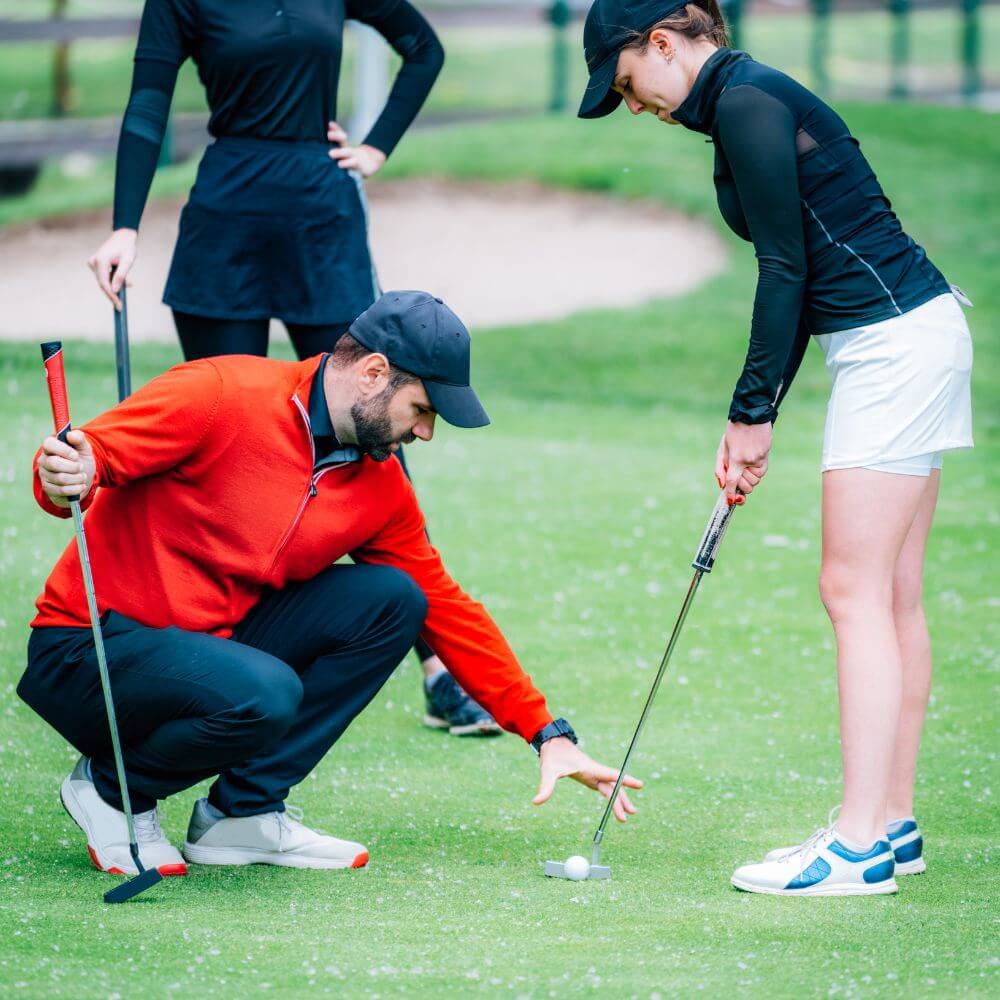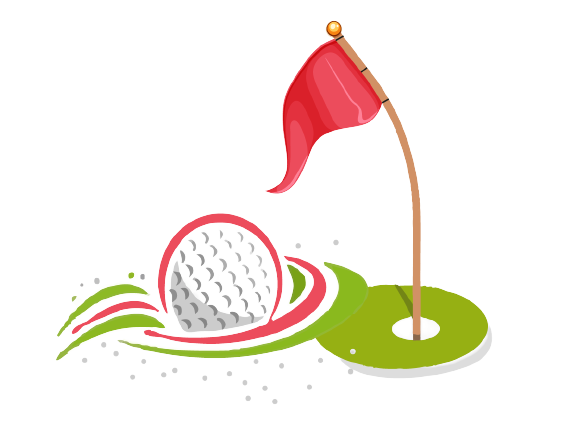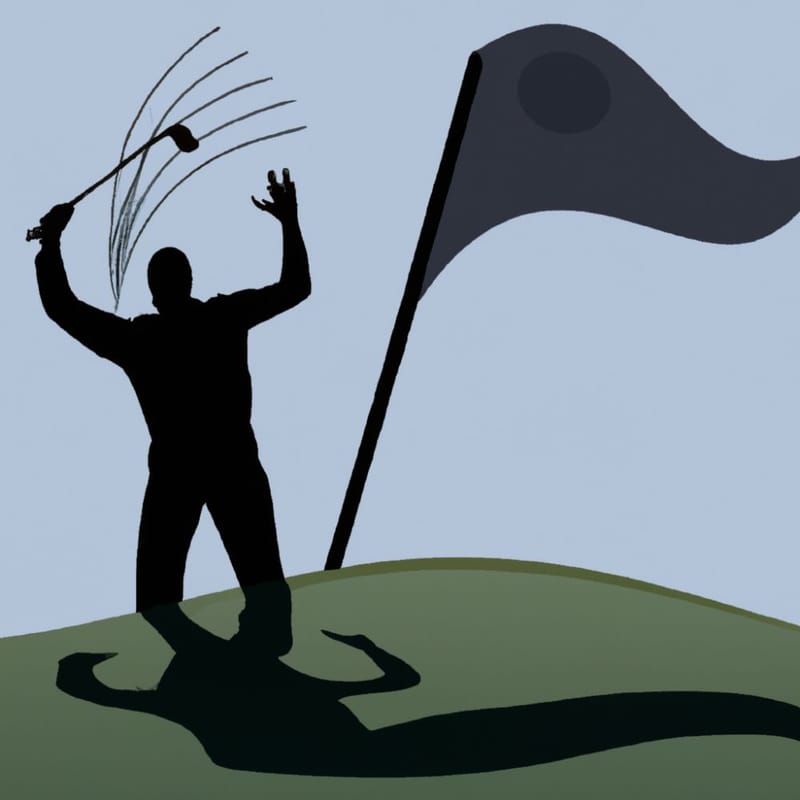Content Summary
Golf is a game of strategy. Every hole presents different challenges and opportunities for amateur golfers to navigate successfully. Many different factors can affect a golfer's performance, including weather conditions, course conditions, and personal mental and physical factors.
However, by following a few key strategies, many golfers can improve their game and lower their scores. In this article, we'll explore 13 golf strategies that every golfer should know to help them succeed on the course.
The list is in no particular order since everyone will have strengths and weaknesses around each of the key concepts within these tips.
I'm going to discuss my own strengths and weaknesses within these tips as well.
- Don't Mess With Your Swing Mid-Round
- Always Stay Positive
- Are You Trying to Be a Hero
- Shoes Are the Foundation
- Be OK With Laying-Up
- Look Out for the The Danger Zone
- Learn to Visualize Your Shots
- Keep a Favorite 'Go-To' Longer Club Handy
- Play the Percentages into the Green
- Stress-less Putting
- Poor Weather Conditions Play
- Manage Your Misses
- Course Management
How to Succeed on the Golf Course
Don't Mess With Your Swing Mid-Round
(This is a weakness for me. I have a tendency to try swing changes in the middle of my round even though I have not practiced them on the range. Sometimes it works out, most times it doesn't).
One of the most important golf strategies is to avoid tinkering with your swing or equipment mid-round. Making adjustments to your swing or equipment can have unintended consequences, and it can take time to adjust to these changes.
If you feel that you need to make changes to your swing or equipment, it is best to do so before or after your round.
Always Stay Positive
(A strength for me. No matter what, I love being out playing golf so my attitude is always positive).
Golf can be a frustrating game, and it is easy to become negative when things don't go your way. However, staying positive is one of the most important golf strategies you can employ.
Positive thinking can help you stay focused, maintain your confidence, and make better decisions on the course.

Are You Trying to Be a Hero
(Strength, I'll occasionally try the hero shot just for fun).
Golf is not about hitting the longest drive or making the most difficult shot. It is about making smart decisions and playing to your strengths.
It is important to resist the urge to be a hero and try to make shots that are beyond your skill level. Instead, focus on playing within your abilities and making smart decisions that will help you avoid trouble.
Shoes Are the Foundation
(A strength, soooo important, comfort is key)
The right golf shoes can make a big difference in your game. Proper golf shoes provide stability and traction, which can help you maintain your balance and improve your swing.
When selecting golf shoes, look for a comfortable fit that provides adequate support and traction on a variety of surfaces.
Be OK With Laying-Up
(Strength, I have no problem laying up, even on a par 4. I let my short game bail me out if possible).
Laying up is an important golf strategy that can help you avoid trouble and improve your score. When faced with a difficult shot, it is often better to lay up and take a shorter, easier shot instead of trying to make a more difficult shot.
Learning when to lay up and when to take a more aggressive approach can help you avoid big numbers on your scorecard.
Look Out for the Danger Zone
(Weakness but getting better. I'm paying more attention to this area, mistakes are less).
The danger zone is a term used to describe the area on the golf course where a golfer is most likely to make a big number.
This can be a challenging hole, a difficult shot, or a tricky middle of the green. Identifying the danger zone on each hole can help you make smarter decisions and avoid making big mistakes.
Learn to Visualize Your Shots
(Strength, I can mentally understand the shot I want to make and execute it).
Visualization is an important tool for golfers. Before every shot, take a moment to visualize the shot in your mind. Imagine the ball flight, the trajectory, and the landing spot.
Visualization can help you focus your mind, reduce anxiety, and improve your shot-making ability.
Keep a Favorite 'Go-To' Longer Club Handy
(Strength, my 5 wood is the club for me. Always gives me a chance for a par on longer holes).
Having a go-to longer club is an important golf strategy. This is a club that you can rely on to hit long, accurate shots when you need them most.
It is important to choose a club that you feel comfortable with and have confidence in. This can be a fairway wood, hybrid, or long iron, depending on your personal preference.
Play the Percentages into the Green
(Strength in playing the wedge shot percentages but weakness in pulling off the shot. I don't always hit the green..LOL).
Playing the percentages is an important golf strategy that can help you avoid trouble and improve your score.
Instead of trying to make the perfect shot, focus on hitting the ball to a safe area of the green. This may not result in a birdie opportunity, but it can help you avoid bogeys and double bogeys.
Stress-less Putting
(Strength, I'm a good lag putter and also good with shorter putts. I think this tip is a great golf strategy because it can lower your score by 3-4 strokes per round).
Putting can be one of the most stressful aspects of golf. It's a mental game in and of itself. However, there are several golf strategies you can use to make putting a more stress-free experience.
First, have a pre-shot routine and then take your time and focus on your pre-shot routine. This can help you get into a rhythm and make more consistent putts.
Second, practice your putting on different types of greens to become more comfortable with a variety of surfaces.
Finally, learn to read greens and understand how the slope and speed of the green can affect your putt.

Poor Weather Conditions Play
(Weakness, I'm not good with cold weather so I tend to stiffen up during shots).
Playing golf in poor weather conditions can be challenging, but there are several golf strategies you can use to improve your performance.
First, dress appropriately for the weather (most golfers tend to under dress and lose their focus because of it). Wear layers to stay warm and dry, and bring rain gear to protect yourself from the elements.
Second, adjust your game to the conditions. Play more conservatively in windy conditions, and use more loft on your shots in wet conditions to help the ball stop more quickly on the green.
Finally, stay mentally focused and maintain a positive attitude, even if the weather is not ideal.
Manage Your Misses
(Strength, I can forget a bad shot. I just look to do better on the next hole).
Even the best golfers miss shots from time to time. However, the key to success is how you manage your misses. Instead of dwelling on a bad shot, focus on your next shot and how you can recover.
If you find yourself in trouble, take a conservative approach and try to minimize the damage. Don't just start swinging at your golf ball. Make a plan for your next shot. By learning to manage your misses, you can improve your score and become a more consistent golfer.
Course Management
(Strength, this is where all the tips come together.)
Course management is all about making smart decisions on the golf course to help you play golf to your strengths and avoid unnecessary risks.
This golf strategy involves analyzing the course layout and conditions and making calculated choices about which shots to hit and where to aim.
By playing strategically and minimizing mistakes, you can improve your score and become a more consistent golfer.
One of the keys to successful course management is knowing your own strengths and weaknesses as a golfer.
For example, if you struggle with accuracy off the tee, it may be best to play more conservatively and hit shorter clubs to stay in the fairway.
On the other hand, if you have a reliable short game, you may be able to take more risks on approach shots to give yourself a better chance at a birdie putt.
Another important aspect of course management is paying attention to the conditions of the course. Wind, slope, and firmness of the ground can all affect how your shots will play out.
By analyzing these factors and adjusting your shot selection accordingly, you can increase your chances of success on each hole.
Course management also involves playing to your strengths and avoiding unnecessary risks. For example, if you're a strong iron player but struggle with your driver, it may be best to leave the driver in the bag on tight driving holes and focus on hitting your irons accurately.
Similarly, if there's a hazard on the course like a deep fairway bunker or water hazard that you know you can't clear, it may be best to play conservatively and lay up to a safer position.
Finally, good course management golf involves thinking ahead and planning your shots in advance. By visualizing each shot and considering the best approach to each hole, you can make more informed decisions and avoid costly mistakes.
Take your time and don't rush your golf swing, and always be aware of the potential risks and rewards of each shot. Know your distance control so you can choose the appropriate shot.
Course management is a crucial golf strategy that can help you play to your strengths, avoid unnecessary risks, and improve your score.
By analyzing the course layout and conditions, playing to your strengths, and thinking ahead, you can become a more strategic and successful golfer.
Remember to stay patient, stay focused, play smart, and most importantly, have fun on the course. With these golf strategies in mind, you can approach every round with confidence and the knowledge that you have the tools to succeed.
Conclusion
Golf is a game of strategy, and a good course strategy can help you improve your game and lower your score.
By staying positive, making smart decisions, and focusing on the fundamentals, you can improve your golf and become a more consistent and successful golfer. By following these golf course management tips you'll soon start to see great improvement in your overall game.
Thank you for visiting, and we hope to see you back soon!








